While I have a very deep love of cotton, so deep it guides my Twitter handle and a couple of series of posts here on the blog (cotton 101 and the fabric of our lives), wheat holds a special place in my head & heart too. I had a great time recently stumbling into some wheat fields. Seeing wheat at harvest prompted a bit of nostalgia. See,wheat was the first crop I ever saw daily while in college. Also my biggest art buys have been wheat related. It is official JPlovesWHEAT too! 😉 So it stands to reason that I have been watching wheat fields as I zoomed here and there on the Missouri highways in the past month.
With the photos I’ve taken as I traveled I have gotten, I could have made this a couple of posts, but that travel also makes it hard to pull various things together and I didn’t want to “just do a photo post” so I have waited hoping that my friends who may not stop at wheat fields find it interesting to seeing how they change over a month’s time.
Waiting to Harvest Wheat
Wheat has a great way of showing its ready to be harvested it turns gold! That’s easy to see but a field like this one, still has too much green in it. Why is that important? Well green means there is still moisture there. Farmers will check moisture levels as they prepare for harvest. Having grain dry down well helps make sure that it can be stored and transported without losses due to losses in quality to fungus and bacteria. So the farmer had to wait for this field to dry down so more.
Wheat that has Lodged or Laid Down
When wheat gets so close to harvest, the head is up high and the plant can be susceptible to lodging ie, just laying down in the field. Spring wind storms, especially tornadoes can lead to lodging. Since combines go along the ground, its hard to harvest wheat that has lodged. And it can tend to take larger areas of a field once lodging happens as the weight of it lays on top of the nearby grain.
Harvesting Wheat Once It’s Ready
You can see that this wheat is more golden than the earlier field I visited. It was dry enough for harvest so the farmers were out there working in the field.
This combine has already “cut” wheat along the ends of the field and is turning to go back into the crop.
As the combine cuts wheat, the straw that isn’t harvested is thrown behind the combine. Just the top part of the wheat plant is going to stay in the combine and be sent to the silo or grain elevator and on to be milled.
Most farms collect the straw like this one is doing, baling it and storing it away. These guys were nice enough to offer me a bale or two to go but I figured my little convertible would look odd with bales strapped to it!
Planting Soybeans into Wheat Stubble
Since wheat is planted early in the year, a lot of farmers can harvest wheat and plant another crop into the stubble. I’ve seen a few folks plant cotton into wheat but the most common way to do this is to plant soybeans into the wheat stubble.
More of My Wheat Photos
[slideshow=postID=13103]
Want to know more about wheat?
I love it but I know just enough to be dangerous! So I’d suggest you learn more from some of the experts out here in the blogosphere!
- Brian Scott of The Farmer’s Life has produced a couple of videos. Here he is harvesting wheat and here is a video of them unloading wheat from the combine to a truck for transportation. And recently he sent agnerds on max excitement as he posted 55 Years of Agricultural Evolution in John Deere Combines
- Judi Graff of farmnwife.com has a great post on Putting Up Straw Bales
- Jesse R. Bussard wrote a post about the weeds wheat farmers deal with — Weedy Wednesday: Grass Weeds in Wheat
- Sarah Bedgar Wilson of Farmer on a Mission has done a great job talking about wheat! She’s got a post on Early 1900’s Kansas Wheat Harvest, Thankful Thursday: Mama’s View of Wheat Harvest, about harvest in general I sure hope that’s my husband! and a video of Wilson Farm Wheat Harvest 2009
- Jane Lukens of GriggsDakota also has a bunch of wheat posts including one about the wheat heading out this month A First on June 1st: Heading Wheat, one about Decorating with Wheat, about the environmental component of Corn, Geese, and Wheat and more!
- baling wheat straw
- a field that’s been double cropped from wheat to soybeans
- soybeans coming up through wheat straw
- wheat having lodged, or fallen down pre-harvest
- wheat field
- close up of wheat near harvest
- wheat nearing harvest time
- slightly green wheat
- wheat getting close to harvest
- combine harvesting wheat on the farm
- close up of wheat in the field
- wheat harvest
- harvest across a wheat field
- combine ready to harvest wheat
- wheat field at harvest time
- closeup of wheat
- baling hay straw
- wheat field after harvest,
- straw bales on a trailer
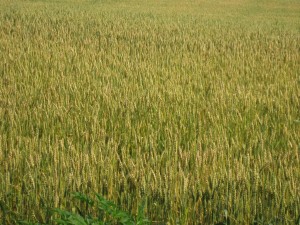
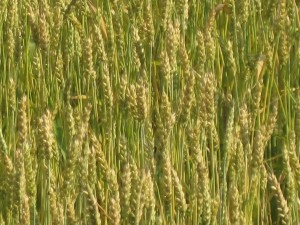

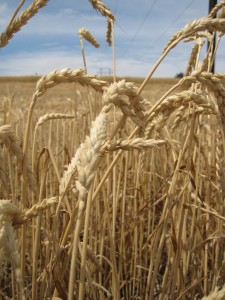
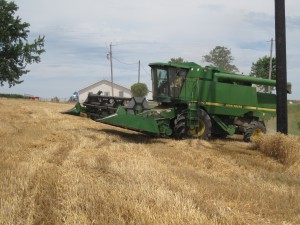
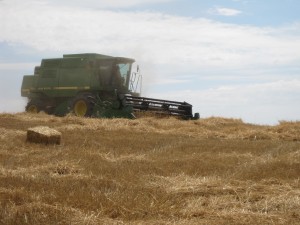

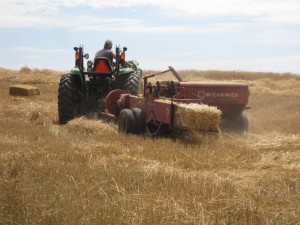

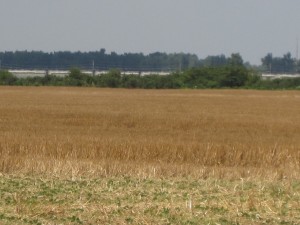
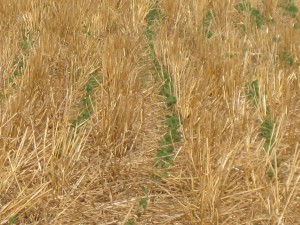
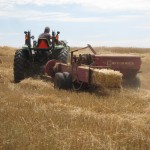


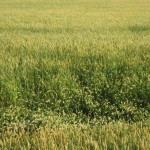
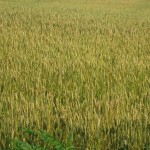

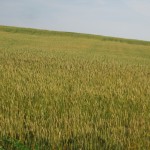
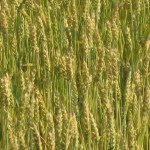
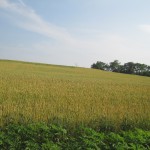
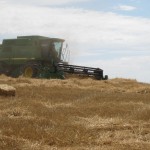
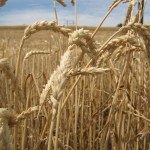
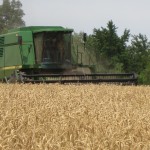
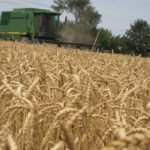


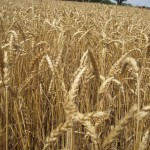
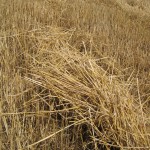
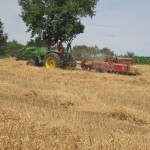
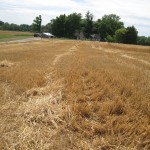
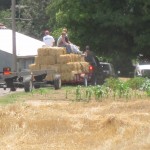



I grew up with wheat fields all around us. I remember running through them as children and hiding. The smell when it’s harvested will always be with me. Great memories!!! 🙂
Glad to hear it! I love the way it moves with a good breeze!
Great photos – very representative of America.
Wheat stubble apparently lasts just about forever, too. Recently I went down into the cellar of my family’s farmhouse in Davis, Calif., and noticed in the two-foot space between the underside of the house and the ground wheat stubble that was left from when the last crop was cut before the house was built in 1912. The house was built over the ground where the stubble is without it being plowed under. It’s still there, standing tall, exactly 100 years later.
WOW! Did you shoot photos from that crawl space? I really would love to see those! 🙂